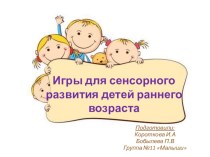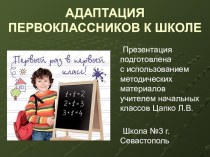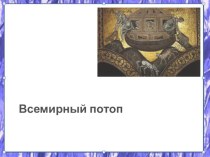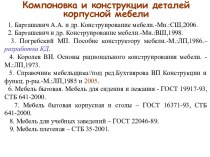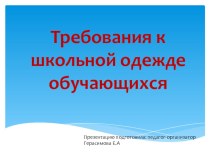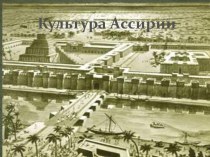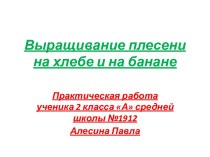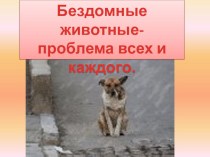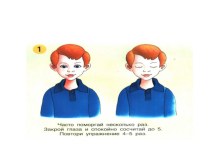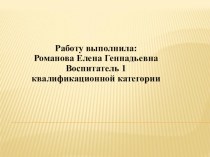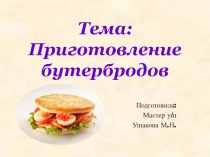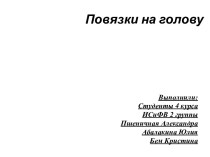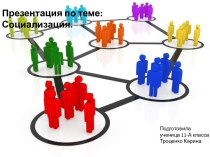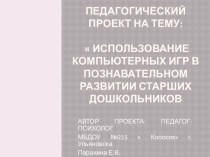- Главная
- Разное
- Бизнес и предпринимательство
- Образование
- Развлечения
- Государство
- Спорт
- Графика
- Культурология
- Еда и кулинария
- Лингвистика
- Религиоведение
- Черчение
- Физкультура
- ИЗО
- Психология
- Социология
- Английский язык
- Астрономия
- Алгебра
- Биология
- География
- Геометрия
- Детские презентации
- Информатика
- История
- Литература
- Маркетинг
- Математика
- Медицина
- Менеджмент
- Музыка
- МХК
- Немецкий язык
- ОБЖ
- Обществознание
- Окружающий мир
- Педагогика
- Русский язык
- Технология
- Физика
- Философия
- Химия
- Шаблоны, картинки для презентаций
- Экология
- Экономика
- Юриспруденция
Что такое findslide.org?
FindSlide.org - это сайт презентаций, докладов, шаблонов в формате PowerPoint.
Обратная связь
Email: Нажмите что бы посмотреть
Презентация на тему Language and culture (kinship)
Содержание
- 2. The basis of all kinship systems is
- 3. Languages furthermore distinguish between neutral and familiar
- 4. A further axis of distinctions in kinship
- 5. Kinship terminology not a universal(Seneca ) Iroquoian
- 6. Seneca Kinship TerminologyDifferent terms for for older
- 7. Скачать презентацию
- 8. Похожие презентации
The basis of all kinship systems is the nuclear family, consisting of mothers and fathers, brothers and sisters. Within this unit the relationship of mother to child is the centre. The role of the father is
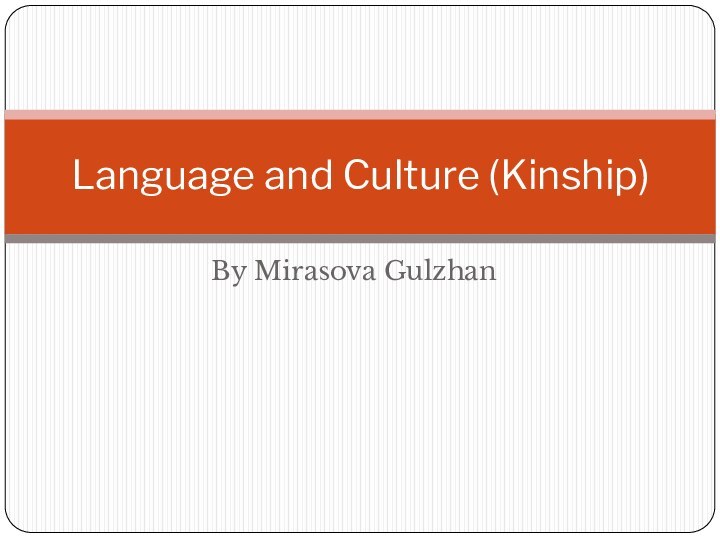
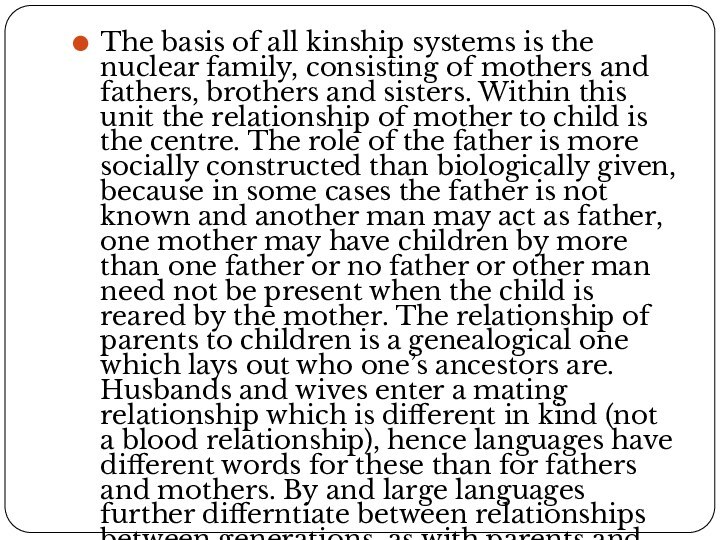
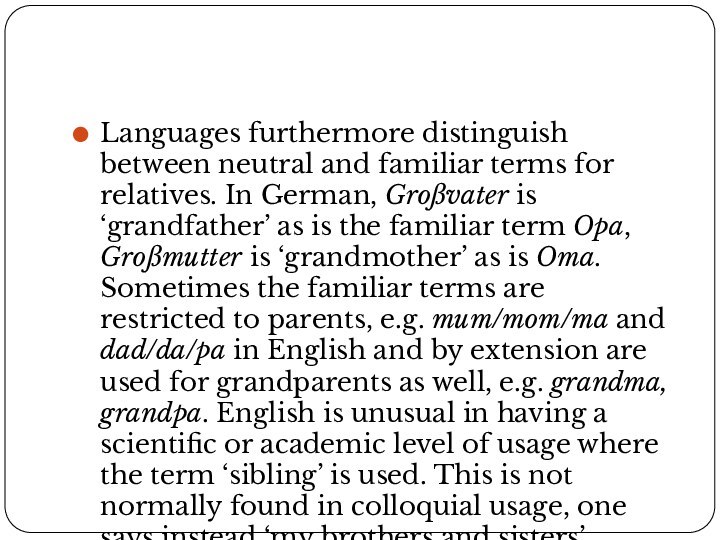
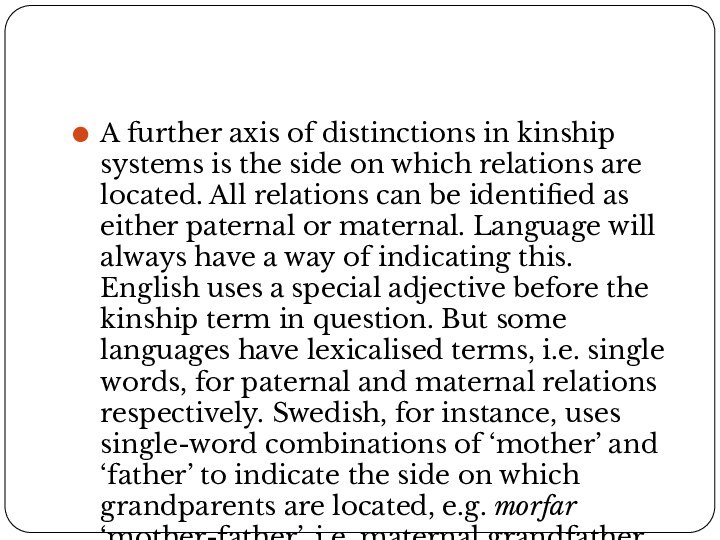

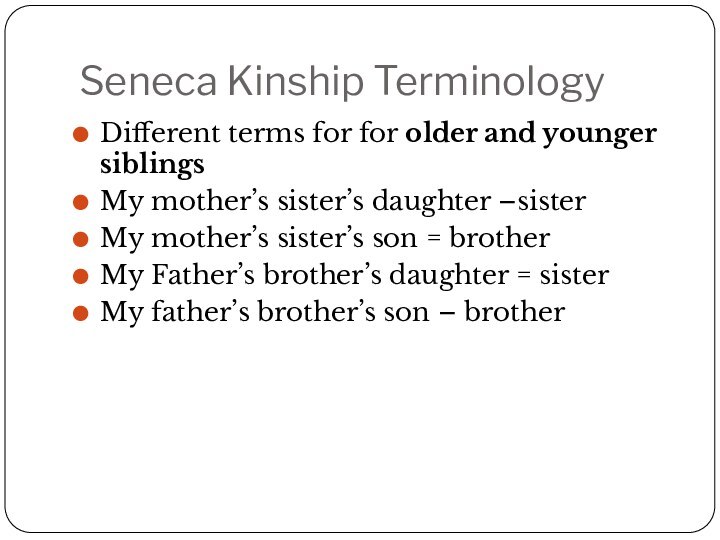

Слайд 3 Languages furthermore distinguish between neutral and familiar terms
for relatives. In German, Großvater is ‘grandfather’ as is
the familiar term Opa, Großmutter is ‘grandmother’ as is Oma. Sometimes the familiar terms are restricted to parents, e.g. mum/mom/ma and dad/da/pa in English and by extension are used for grandparents as well, e.g. grandma, grandpa. English is unusual in having a scientific or academic level of usage where the term ‘sibling’ is used. This is not normally found in colloquial usage, one says instead ‘my brothers and sisters’, except in some set expressions like sibling rivalry.Слайд 4 A further axis of distinctions in kinship systems
is the side on which relations are located. All
relations can be identified as either paternal or maternal. Language will always have a way of indicating this. English uses a special adjective before the kinship term in question. But some languages have lexicalised terms, i.e. single words, for paternal and maternal relations respectively. Swedish, for instance, uses single-word combinations of ‘mother’ and ‘father’ to indicate the side on which grandparents are located, e.g. morfar ‘mother-father’, i.e. maternal grandfather, farfar ‘father-father’, i.e. ‘paternal grandfather’.
Слайд 5
Kinship terminology not a universal
(Seneca ) Iroquoian languages
(Quebec, Ontario, and New York)
My Grandmother and her sister
(s): one word My Grandfather and his brother (s): one word
My Mother and her sister (s): one word
My Father and hiss brother (s): one word
Слайд 6
Seneca Kinship Terminology
Different terms for for older and
younger siblings
My mother’s sister’s daughter –sister
My mother’s sister’s son
= brotherMy Father’s brother’s daughter = sister
My father’s brother’s son – brother

